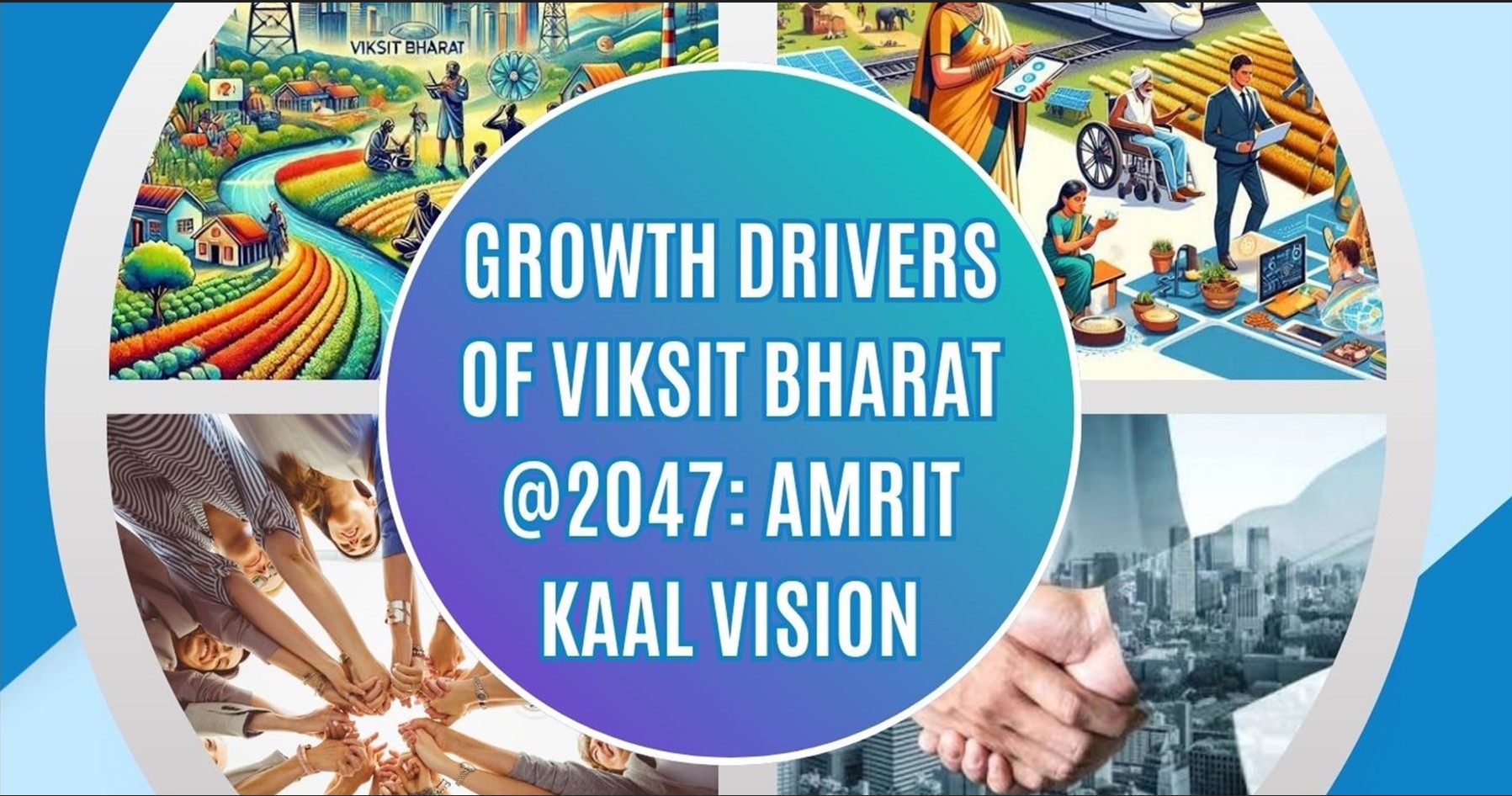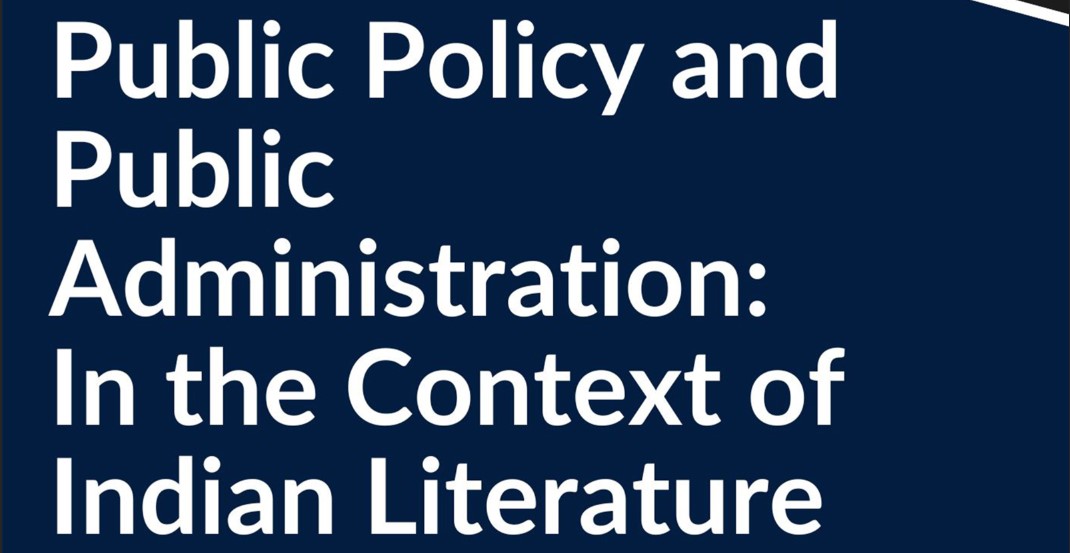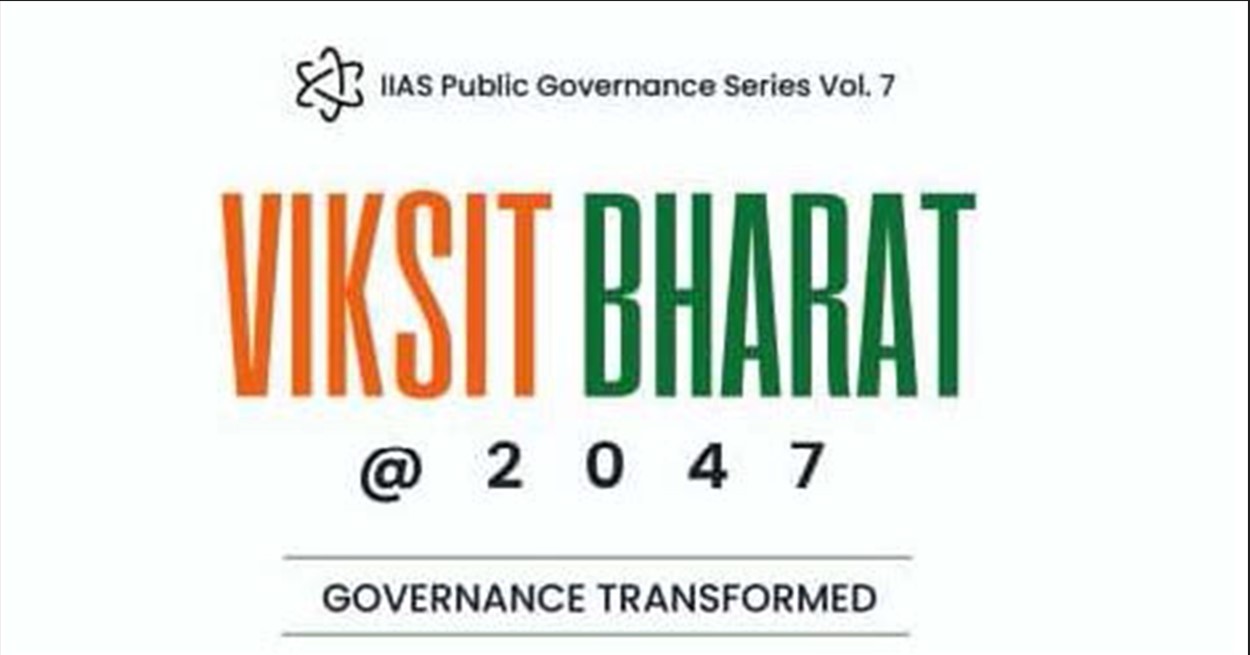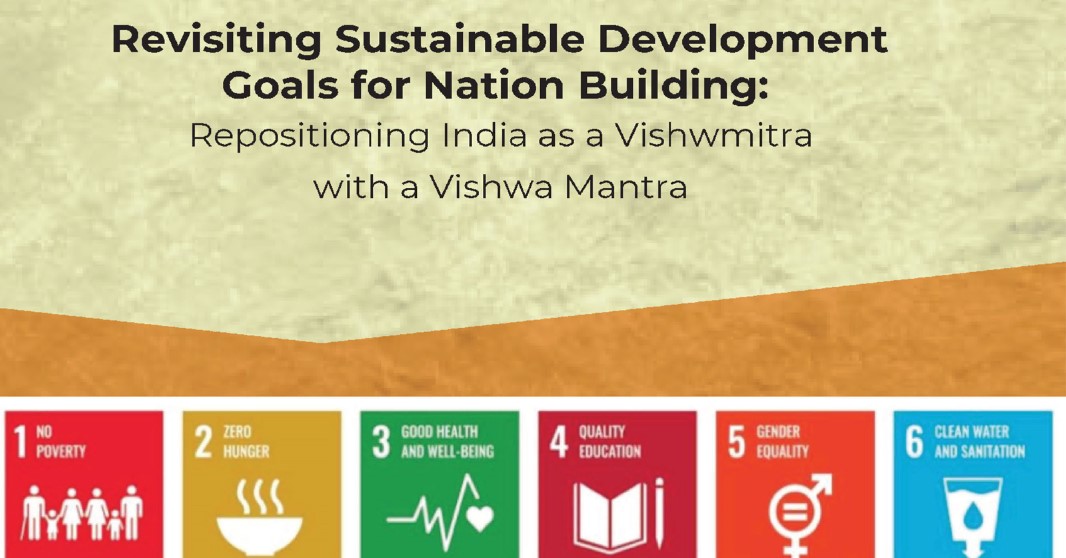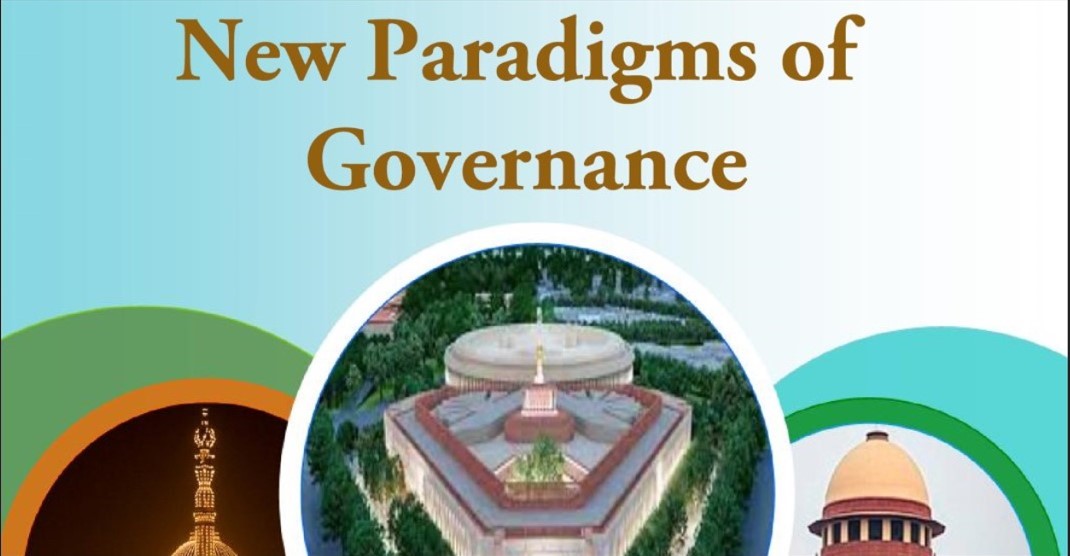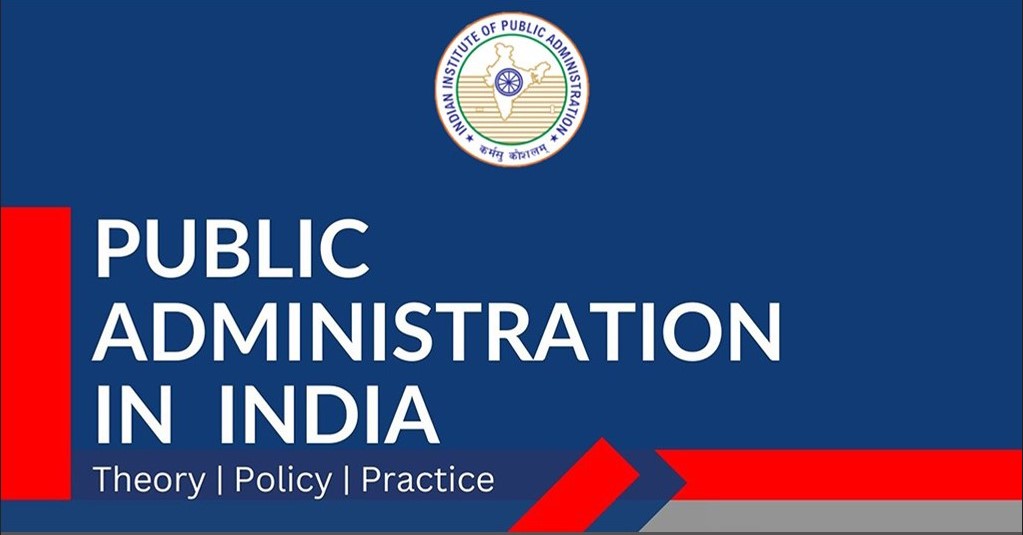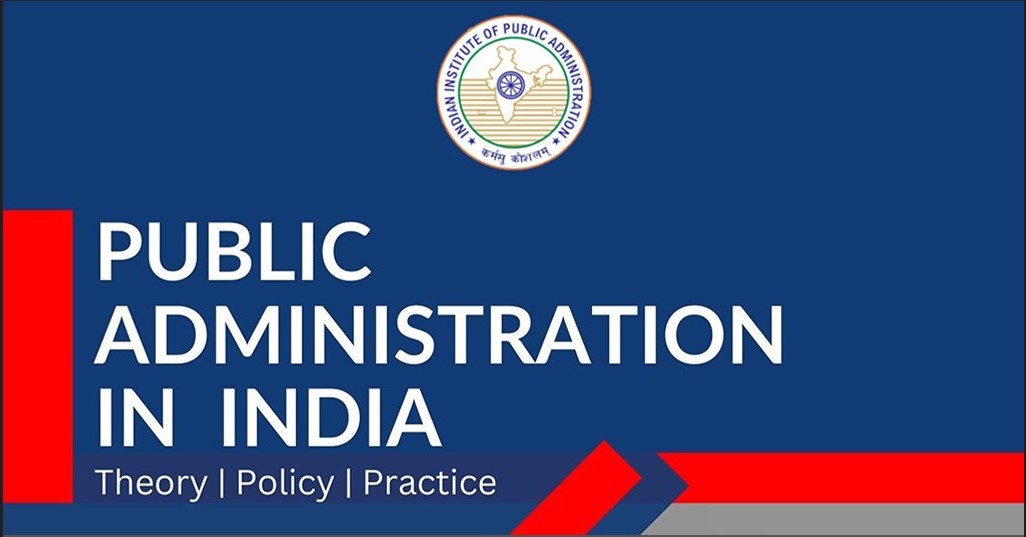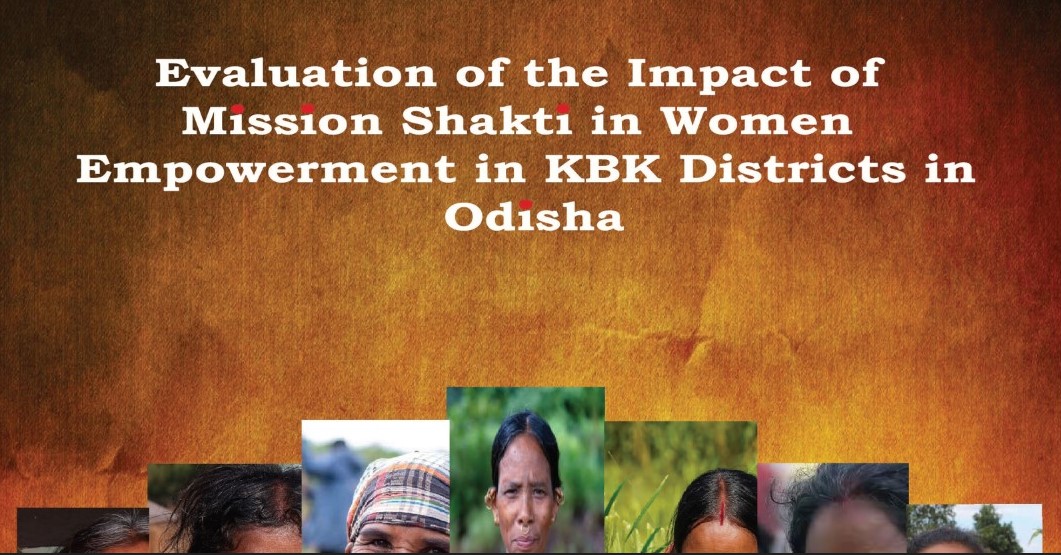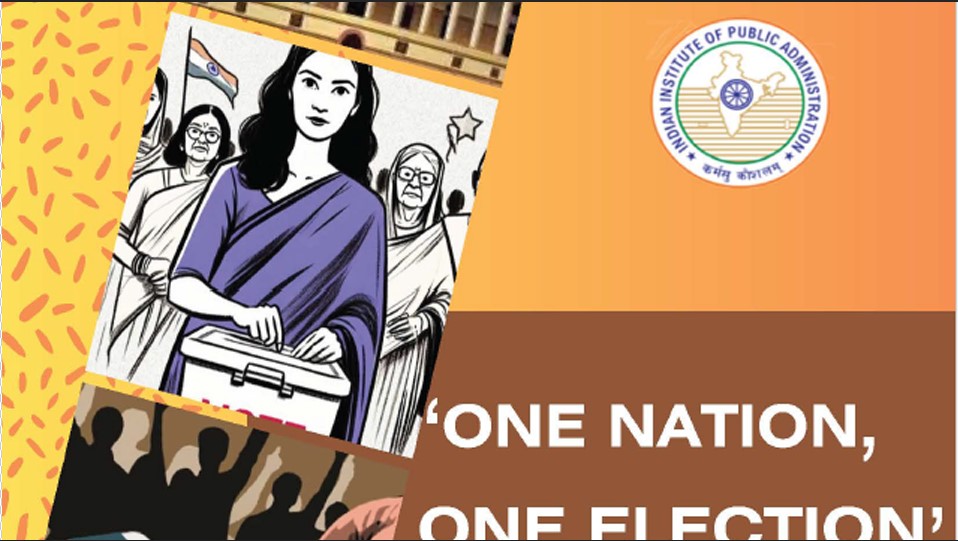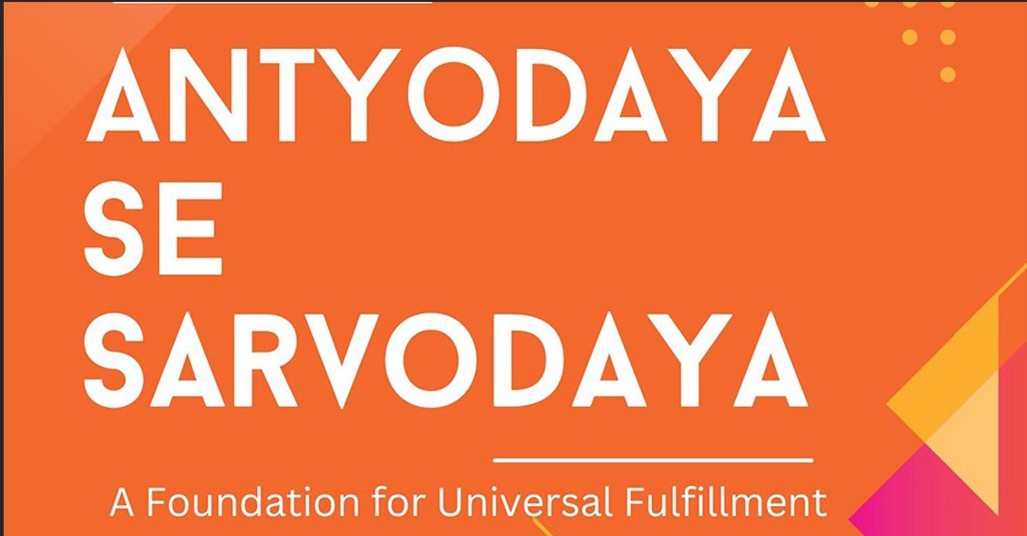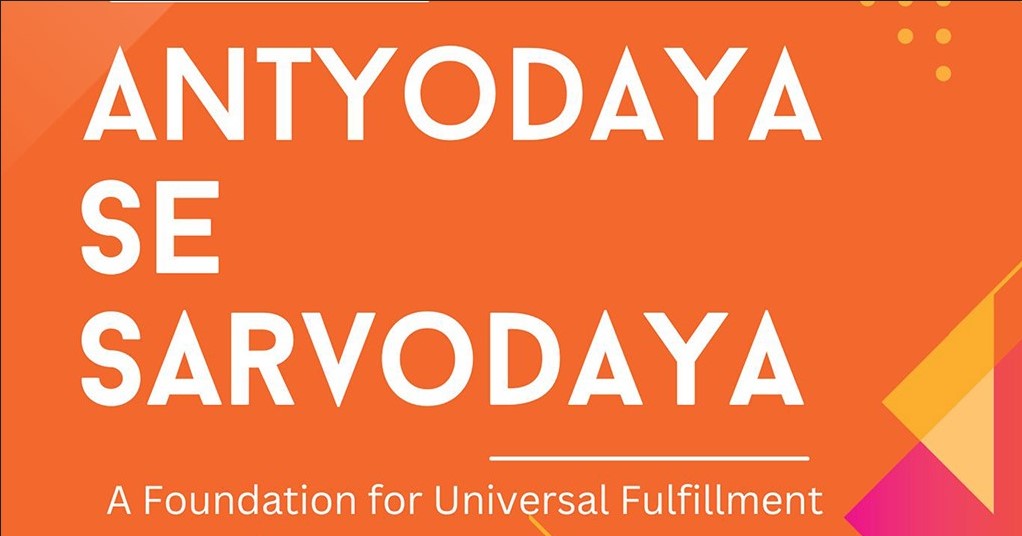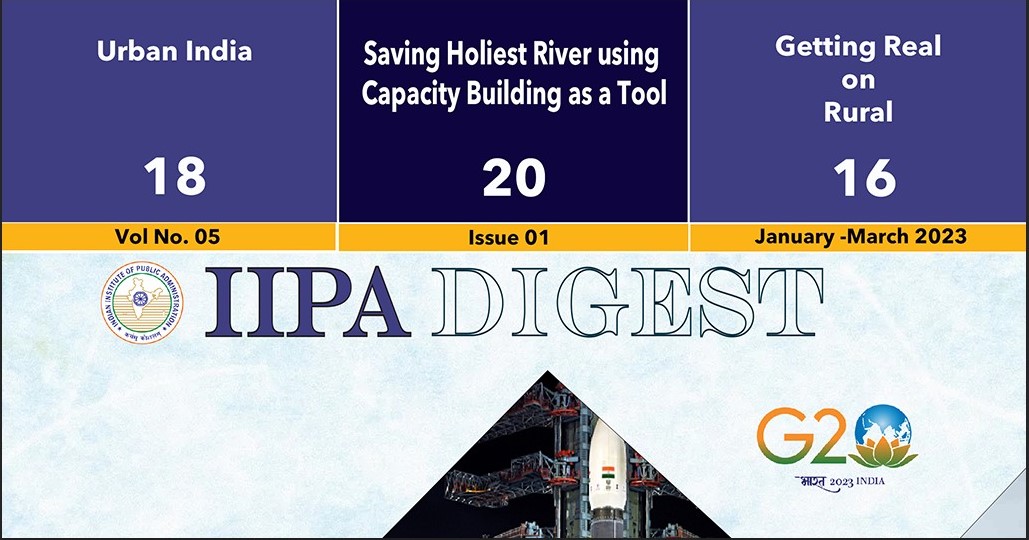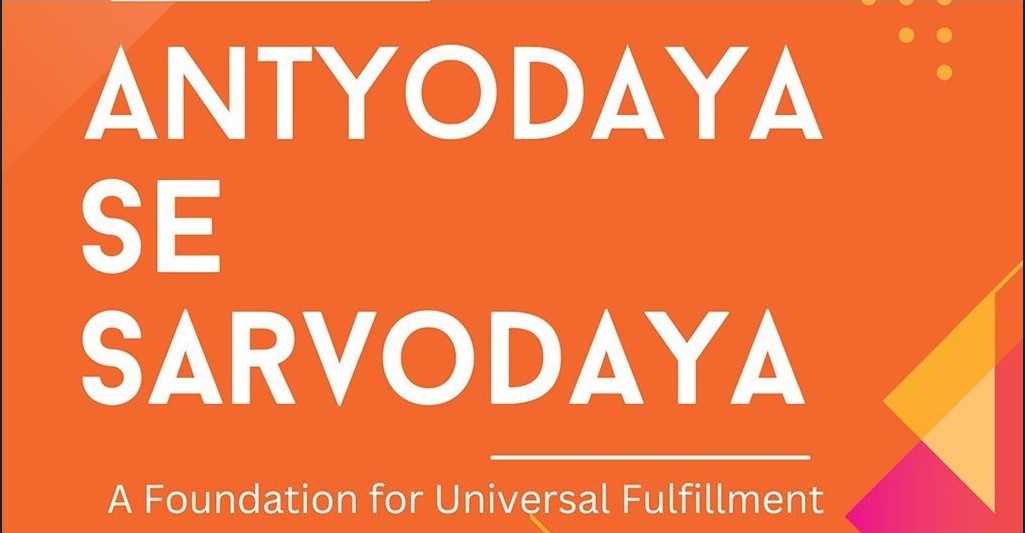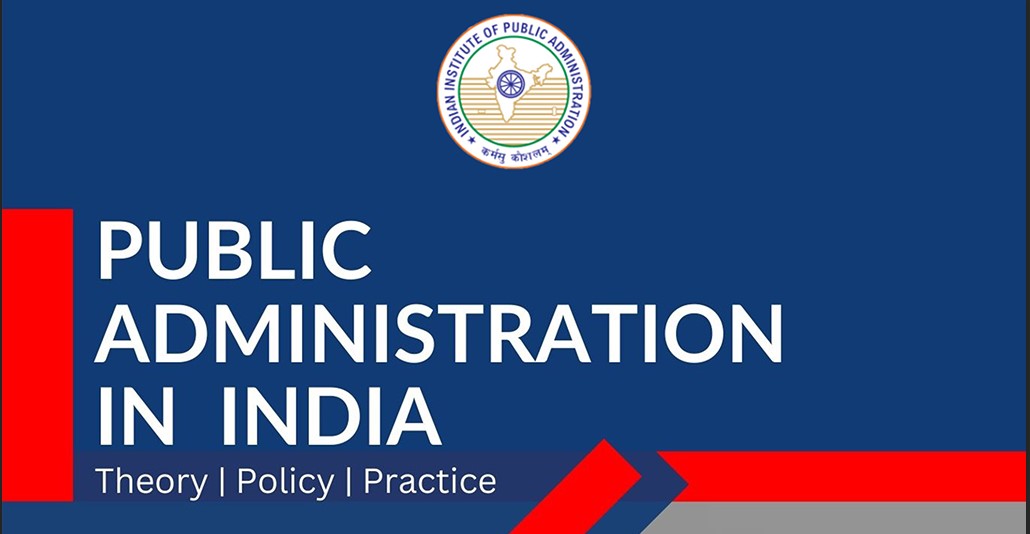Steering the Nation: Ethical Leadership as a pillar for Corruption-Free Viksit Bharat
Abstract
Corruption poses a considerable impediment to India's progress, hindering its potential for advancement and affluence. This paper highlights the role of ethical leadership as a fundamental cornerstone in making of a corruption-free Viksit Bharat (Developed India). By examining the relationship between ethical leadership, governance, and societal principles, this study underscores the importance of fostering integrity and accountability in leadership roles. Furthermore, this paper also examines strategies for promoting ethical leadership across diverse sectors as well. India's trajectory toward becoming a 'Viksit Bharat' is intrinsically linked to establishing a resilient ethical framework within its leadership. By examining the challenges presented by corruption and the advantages of ethical governance, this paper underscores the pressing need for a transformative strategy in leadership development.
Keywords: Viksit Bharat, India, ethical leadership, governance, corruption, public service, integrity, transparency, accountability.
1. Introduction
1.1 Corruption and its impact
Corruption is a timeless phenomenon. Kautilya in his Arthashastra, which is believed to have originated in Ancient India sometime in 4th Century BC, vividly illustrates the phenomenon in the following quote:
"Just as it is impossible not to taste honey or the poison that one may find at the tip of one's tongue, so it is impossible for one dealing with government funds not to taste a little bit of the king's revenue. Just as it is impossible to know whether fish moving in water are drinking it, so it is impossible to find out when government servants employed in government work are taking money for themselves." - Kautilaya, Arthshastra (4th Century BC)
The impact of Corruption is, however, not merely economic. Corruption has an impact that goes beyond the costs observed in the markets. For example, studies have evidenced that corruption affects the satisfaction gained by the citizens. Corruption in India is not confined to a single sector or level of governance; rather, it affects nearly all aspects of the public sector, ranging from local governments to national institutions. It manifests in numerous forms, including bribery, nepotism, embezzlement, and favoritism, all of which distort public service delivery, create inefficiencies, and erode public trust in the system.
Bribery, perhaps the most visible form of corruption, is prevalent in various areas, including law enforcement, tax collection, licensing, and regulatory approvals. Public officials often demand bribes in exchange for basic services or to expedite procedures, which creates an uneven playing field and undermines fairness. Nepotism and favoritism, where jobs, contracts, or resources are allocated based on personal connections rather than merit, further perpetuate inequality and inefficiency. Embezzlement of public funds is another serious concern, where leaders or officials siphon off money that should be allocated for public welfare or infrastructure development. This widespread corruption not only undermines the integrity of government institutions but also creates an environment of impunity, where unethical behavior is often tolerated or overlooked.
This corruption extends beyond government bodies into many facets of Indian society, including business, education, and healthcare. In some cases, the private sector colludes with government officials to circumvent regulations or manipulate bidding processes for government contracts, further fueling the cycle of corruption. Weak institutional frameworks compound the difficulty in curbing such behavior, insufficient enforcement of anti-corruption laws, and a lack of political will to tackle powerful vested interests. As a result, corruption remains entrenched at all levels of governance, undermining efforts to improve governance and achieve sustainable development.
1.2 The Corruption Landscape in India
India’s position on global corruption indices highlights the pervasive and systemic nature of corruption within its governance structure. According to various international corruption perception rankings, India consistently ranks poorly, reflecting deep-rooted issues within political, administrative, and societal frameworks. Corruption in India exerts extensive ramifications on its political, economic, and social infrastructures. According to Transparency International’s Corruption Perceptions Index (CPI) 2024, India is ranked 84th out of 180 countries, underscoring the persistent nature of corruption despite ongoing initiatives to combat it. The mismanagement of resources, inefficiencies in public administration, and the misappropriation of funds allocated for developmental programs have impeded economic advancement and exacerbated social disparities. Consequently, public trust in governmental institutions has steadily declined. A 2024 report by the Centre for the Study of Developing Societies (CSDS) revealed that approximately 70% of Indian citizens perceive corruption as a substantial obstacle to the nation's advancement. This lack of trust not only impedes developmental endeavors but also weakens democratic principles and cultivates an environment of political instability.
1.3 Role of Ethical Leadership in Combating Corruption
To confront this widespread issue, ethical leadership is progressively acknowledged as an indispensable solution for curbing corruption and propelling India’s development. Ethical leadership, anchored in principles such as integrity, transparency, and accountability, can assume a transformative role in reshaping governance practices. In 2024, India introduced a revised National Anti-Corruption Strategy, emphasizing the inculcation of leadership ethics at both the national and local levels. Ethical leaders who prioritize the public interest over personal or political gains can restore confidence in governmental institutions, ensuring the judicious utilization of public resources for national development. This leadership approach fosters a culture of responsibility, ensuring that leaders remain accountable to the citizens they serve, which is essential for mitigating corruption in governance.
The notion of ethical leadership holds particular relevance in India, where the urgency for reform is crucial. While India’s democratic institutions exhibit resilience, corruption remains deeply ingrained within public administration, law enforcement, and various other sectors. Consequently, ethical leadership must be promoted across all governance levels and within the private sector. In 2024, India’s corporate governance code underwent revisions to incorporate more stringent regulations for corporate accountability, mirroring the broader national emphasis on ethics in leadership. By bolstering ethical leadership in both governmental and business domains, India can foster an environment conducive to curtailing corruption, enhancing transparency, and establishing a more equitable society.
1.4 Vision of Viksit Bharat
The vision of a 'Viksit Bharat' is a testament to India's aspirations for global prominence.
India, with its rich cultural heritage and diverse population, stands at a crossroads in its journey towards becoming a developed nation or Viksit Bharat. However, achieving this goal requires a holistic transformation, encompassing not only economic growth but also social justice and good governance. However, the pervasive issue of corruption poses a significant challenge to this vision. Corruption, a persistent challenge, undermines these aspirations and hinders development efforts. Corruption not only hampers economic growth but also erodes public trust in institutions, leading to social unrest and inequality. Ethical leadership emerges as a crucial element in combating corruption and steering the nation towards sustainable development. Ethical leadership, characterized by integrity, transparency, and accountability, is indeed a powerful antidote to corruption and a cornerstone for a corruption-free India.
1.5 The concept of Ethical Leadership
Ethical leadership can be defined as the demonstration of normatively appropriate conduct through personal actions and interpersonal relationships, and the promotion of such conduct in followers through two-way communication, reinforcement, and decision-making. Key characteristics of ethical leaders include integrity, accountability, transparency, empathy, and a commitment to the common good. Scholars such as James MacGregor Burns (1978) define ethical leadership as encouraging followers to pursue collective goals beyond self-interest, thereby fostering moral awareness and responsibility. Burns emphasizes that ethical leaders inspire their followers by transforming their moral values and guiding them towards higher ethical standards.
Stephen Covey (1989) further highlights that moral authority stems from adherence to universal principles such as honesty, integrity, and respect for others. Ethical leaders do not simply enforce rules; they embody the values they wish to instill in their followers. This alignment between personal values and leadership practices is critical for cultivating a culture of integrity within organizations. Moreover, Peter Drucker (1992) asserts that effective leadership involves raising individuals' visions beyond their ordinary limitations. Ethical leaders empower their followers by providing them with the tools and support necessary to achieve their potential while adhering to ethical standards. The existing literature on ethical leadership highlights its significance in promoting transparency and reducing corruption within governance frameworks. Research indicates that organizations led by ethical leaders experience higher levels of employee engagement, job satisfaction, and organizational commitment (Brown et al., 2005). Furthermore, ethical leaders are more likely to communicate clear ethical standards and hold their followers accountable for adhering to these standards.
2. Importance of Ethical Leadership in Governance
In the context of governance, ethical leadership is vital for establishing trust between the government and its citizens. Leaders who prioritize ethical considerations in their decision-making processes are more likely to foster an environment of accountability and transparency, which are essential for curbing corruption. Ethical leadership plays a pivotal role in shaping governance structures that prioritize transparency and accountability. Leaders who exemplify ethical behavior inspire trust among citizens and stakeholders, creating an environment conducive to effective governance. In contrast, leaders who engage in corrupt practices erode public trust, leading to disillusionment and disengagement from the political process.
However, despite the growing body of research on ethical leadership, gaps remain in empirical studies linking specific ethical practices to governance outcomes in India. While numerous theoretical frameworks exist outlining the characteristics of ethical leaders (Trevino et al., 2000), there is limited research with regard to examining how these characteristics translate into effective governance practices within the Indian context. This paper aims to fill these gaps by analyzing case studies of successful ethical leaders in India and their impact on curbing corruption. By exploring real-world examples of ethical leadership in action, this research seeks to provide valuable insights into how India can leverage ethical governance to achieve its developmental goals. Significance of Ethical leadership in governance can be highlighted in the following aspects:
i. Empowerment through Ethical Practices
Ethical leaders empower their followers by creating an environment where individuals feel valued and respected. For instance, Verghese Kurien's cooperative model allowed farmers to take ownership of their work while ensuring transparency in operations. This empowerment led to increased productivity and reduced exploitation by middlemen. Verghese Kurien's Leadership during India's White Revolution exemplifies how ethical practices can empower communities and promote accountability. Kurien established the cooperative model through Amul, allowing farmers to gain control over their livelihoods while ensuring fair prices and transparency in milk production. His commitment to ethical leadership not only improved rural incomes but also reduced corruption within the dairy sector.
ii. Establishing Accountability Mechanisms
Effective leaders implement accountability mechanisms that promote transparency within organizations. T.N. Seshan's tenure as Chief Election Commissioner exemplifies this principle; he introduced strict regulations limiting campaign expenses and preventing electoral malpractice. His reforms significantly improved the integrity of India's electoral process.
iii. Building Trust among Stakeholders
Ethical leaders foster trust among citizens by demonstrating consistent adherence to moral principles. E. Sreedharan's management of the Delhi Metro project showcased how transparency in financial reporting and project execution can enhance public confidence in government initiatives.
iv. Inspiring collective action against Corruption
Ethical leaders inspire collective action against corruption by mobilizing communities around shared values. Anna Hazare's anti-corruption movement galvanized public support for greater accountability within government institutions, ultimately leading to significant legislative changes such as the Lokpal Act. The Anna Hazare Movement; this grassroots movement underscored the potency of ethical leadership in advocating for anti-corruption legislation in India, galvanizing public support, and leading to the establishment of the Lokpal Bill.
v. Creating Institutional Frameworks for Ethical Governance
Successful leaders establish institutional frameworks that promote ethics at all levels of governance. The establishment of anti-corruption agencies like the Directorate on Corruption and Economic Crime (DCEC) in Botswana demonstrates how institutional mechanisms can effectively deter corrupt practices.
vi. Corporate Initiatives
Companies like the Tata Group have set benchmarks for ethical leadership in the corporate sector, demonstrating that ethical practices can coexist with profitability.
3. Ethical Leadership as a Solution
Building a Culture of Integrity
• Education and Training: Incorporating ethics into educational curricula at all levels can instill values of integrity and accountability in future leaders. Training programs for current leaders should emphasize ethical decision-making and the importance of transparency.
• Role of Civil Society: Civil society organizations play a crucial role in promoting ethical leadership by advocating to transparency, holding leaders accountable, and empowering citizens to demand ethical governance.
• Public Policy Reforms: Implementing policies that promote transparency, such as the Right to Information Act, can enhance accountability in governance. Additionally, establishing independent anti-corruption bodies can help investigate and prosecute corrupt practices.
Leadership in Various Sectors
• Political Leadership: Elected officials must embody ethical leadership to restore public trust. This can be achieved through transparent electoral processes, regular audits, and public accountability mechanisms.
• Corporate Leadership: Businesses must adopt ethical practices to contribute to a corruption-free environment. Corporate governance frameworks should prioritize ethical conduct, and companies should be held accountable for their role in perpetuating corruption.
• Community Leadership: Local leaders and influencers can drive change by promoting ethical behavior within their communities. Grassroots movements can mobilize citizens to demand accountability from their leaders.
Reforms in Governance
• Strengthening Institutions: To achieve a corruption-free Viksit Bharat, India must invest in strengthening institutions responsible for upholding ethics within government operations.
• Promoting Ethical Leadership Development: Training programs aimed at developing future leaders' ethical competencies should be prioritized across all sectors.
• Encouraging Citizen Engagement: Empowering citizens through awareness campaigns can mobilize public support for anti-corruption initiatives.
• Enhancing Transparency: Implementing transparent processes within government operations will help build trust among citizens while deterring corrupt practices.
4. Recommendations
To effectively promote ethical leadership and combat corruption in India, the following recommendations are proposed:
• Strengthening Educational Frameworks: Integrate ethics and leadership training into school and university curricula to cultivate a new generation of leaders who prioritize integrity and accountability.
• Enhancing Transparency Mechanisms: Governments should implement robust transparency measures, such as open data initiatives and public reporting systems, to ensure that citizens have access to information regarding government actions and expenditures.
• Encouraging Whistleblower Protections: Establish comprehensive protections for whistleblowers to encourage reporting of corrupt practices without fear of retaliation. This can help create a safer environment for individuals to come forward with information.
• Promoting Ethical Corporate Practices: Encourage businesses to adopt corporate social responsibility (CSR) initiatives that focus on ethical practices and community engagement, thereby fostering a culture of integrity within the corporate sector.
• Engaging Youth in Leadership Roles: Create platforms for youth engagement in governance and leadership, allowing young leaders to advocate for ethical practices and challenge the status quo.
• Fostering International Collaboration: Collaborate with international organizations and other nations to share best practices in ethical governance and anti-corruption strategies, enhancing the effectiveness of domestic efforts.
5. Conclusion
Ethical leadership is not merely a desirable trait but a necessity for steering India towards a corruption-free Viksit Bharat. By fostering a culture of integrity, accountability, and transparency, India can overcome the challenges posed by corruption and unlock its full potential for development. The collective efforts of educational institutions, civil society, and government bodies are essential in creating an environment where ethical leadership thrives. As the nation moves forward, it is imperative to prioritize ethical considerations in all aspects of governance and leadership. Only through a concerted effort to promote ethical values can India hope to achieve its vision of a developed and corruption-free society. The journey towards Viksit Bharat requires not just policy changes but a fundamental shift in the mindset of leaders and citizens alike, embracing the principles of ethical leadership as the cornerstone of progress. The path to a corruption-free Viksit Bharat is fraught with challenges, but the promotion of ethical leadership offers viable solutions. By prioritizing integrity, accountability, and transparency, India can create a governance framework that not only addresses corruption but also fosters sustainable development. The collective responsibility of leaders, citizens, and institutions is crucial in this endeavor. As India strives for progress, embracing ethical leadership will be essential in realizing the vision of a developed and equitable society for all.
This paper highlights the paramount importance of ethical leadership as a foundational pillar for achieving a corruption-free Viksit Bharat. By fostering a culture of integrity and accountability within public institutions, ethical leaders can drive significant progress toward national development goals while restoring public trust in governance. As India navigates its path toward becoming a developed nation, embracing ethical leadership will be essential for overcoming challenges posed by corruption and inefficiency within government systems. Through sustained efforts to promote ethics at all levels of governance, India can realize its vision of Viksit Bharat, a nation characterized by transparency, accountability, and social justice for all its citizens.
References
1. Brown M.E., Trevino L.K., & Harrison D.A. (2005). Ethical Leadership: A Review and Future Directions.
2. Centre for the Study of Developing Societies (CSDS). (2024). Public Perception of Corruption in India. CSDS.
3. Government of India. (2024). National Anti-Corruption Strategy: 2024. Ministry of Personnel, Public Grievances and Pensions.
4. Indian Institute of Public Administration (IIPA). (2024). Report on Governance and Corruption in Indian Districts: The Role of Ethical Leadership. IIPA.
5. Khan, M. A. (2018). Ethical Leadership and Its Impact on Organizational Performance: A Study of the Public Sector in India. Journal of Business Ethics, 152(3), 657-670.
6. Mishra, A. (2020). Corruption in India: A Historical Perspective. Indian Journal of Public Administration, 66(1), 45-60.
7. Sarkar, S. (2019). The Role of Civil Society in Promoting Ethical Governance in India. Journal of Social Issues, 75(2), 345-362.
8. Securities and Exchange Board of India. (2024). Corporate Governance Code: Revised Regulations. SEBI.
9. Transparency International. (2024). Corruption Perceptions Index (CPI) 2024. Transparency International.
10. Trevino L.K., et al., (2000). The Ethics Challenge: How to Lead With Integrity in Today's Workplace.
11. World Bank. (2024). India: Economic Update. World Bank Group.
Leave a comment
More articles from Governance & Polity




